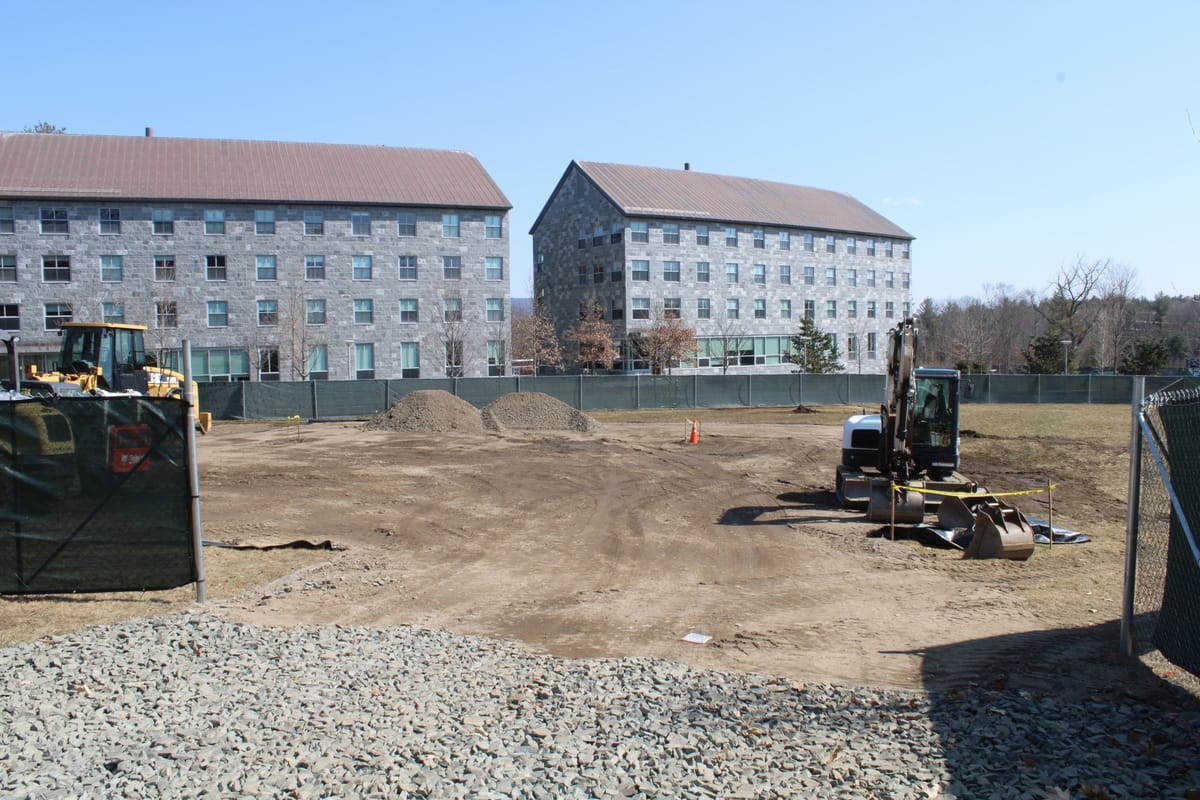Climate Action Plan Construction Begins
On March 13, construction began on the college’s project to transition all buildings to carbon-free heating and cooling systems. The construction represents the next stage of the college’s sweeping Climate Action Plan (CAP), which commits Amherst to full decarbonization by 2030.

On March 13, construction began on the college’s project to transition all buildings to carbon-free heating and cooling systems. Crews broke ground on the King and Weiland Quad and the area near the Eighmy Powerhouse and the college’s power plant.
The construction represents the next stage of the college’s sweeping Climate Action Plan (CAP), which commits Amherst to full decarbonization by 2030. The crews will dig trenches and install new underground pipes connecting more than 80 buildings to a new heating and cooling system that distributes heat using low-temperature hot water instead of steam. Because the new system doesn’t bring water to boiling, it will be much more energy-efficient and could be powered by renewable electricity in the future, an option that is unavailable under the current heating system.
“The plan is to tackle 9-10 buildings a year,” Director of Sustainability Wes Dripps wrote in a message to The Student. He expects the project to be completed by 2030, at which point the current fossil-fuel dependent steam heating and cooling system will be permanently turned off.
The decarbonization of the college’s heating system is just one part of the broader CAP, which included the 2021 completion of a shared solar power facility in Maine with four other colleges and will require the digging of geothermal wells and installation, beginning in 2025, of electric heat pumps across campus.
Dripps said that the majority of the upcoming construction on the heating and cooling system is planned for the summer months, allowing the ground to thaw and minimizing disruptions to campus life.
This summer’s focus will continue to be on the eastern side of campus, with the goal of connecting King and Wieland, the Greenways, the Science Center, and James and Stearns to the new system.
Despite the project’s concentration during summer months, “when you undertake a project this big and comprehensive, there will be some disruption,” Dripps said.
Students will no doubt notice the large fences erected on the King and Weiland quad, around Merrill Science Center, and between the Powerhouse and power plant. Additionally, East Drive below the Science Center, the portion of Barrett Hill Drive next to the Science Center, and the roads around the power plant will see increased traffic from construction vehicles.
Dripps nevertheless said that he hoped that the high-profile construction would encourage students to “get excited about this project.”
Dripps emphasized the gravity of the college’s green transition. “This winter was the warmest winter on record for the state of Massachusetts,” he wrote, “with the average temperature a staggering [eight] degrees above normal!”
He added that the college “recognizes the significance and importance of addressing climate change, and is taking one of the most proactive and ambitious approaches within higher education.”
An important goal of the CAP is to use the college’s fossil-fuel transition to give students a chance to engage in experiential learning in the sustainability field. The heating and cooling system modernization will offer one such opportunity. “We plan to have lots of opportunities for students to interact with the project given its novelty, scale, and scope,” Dripps said.




Comments ()